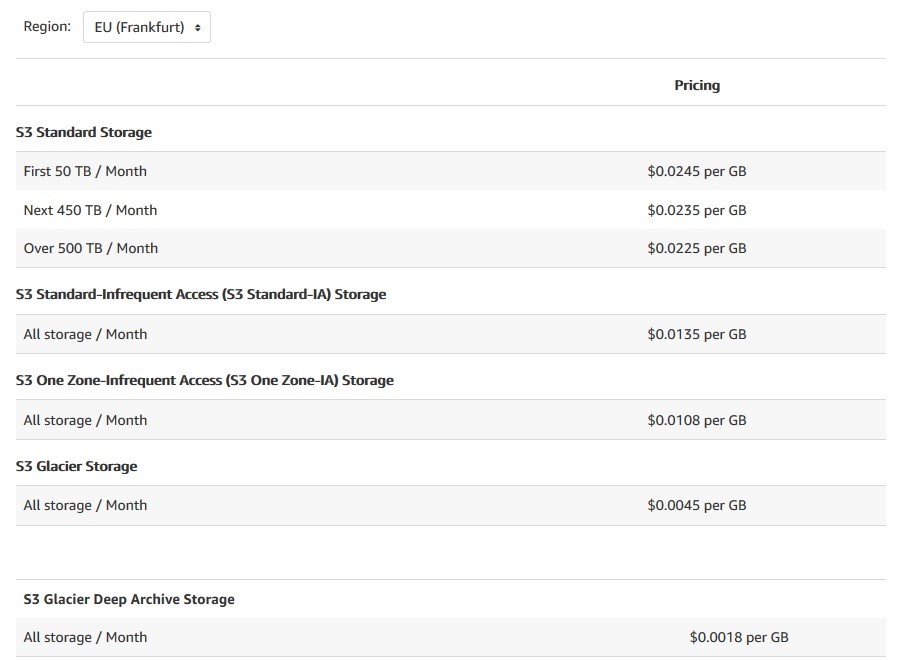Amazon S3 customers have a range of different storage classes to choose from. Six are currently available. At the top of the hierarchy is “S3 Standard”, a class for frequently accessed data. “S3 Glacier” is designed for long-term archiving. And since early 2019, “S3 Glacier Deep Archive” has been available, offering even lower storage costs than S3 Glacier. Configurable life cycle policies are used to automatically move data from one storage class to another. The low costs of storage are a significant advantage, as a glance at the price list makes clear.

On the other hand, accessing objects from S3 Glacier takes significantly longer than from S3 Standard. Within S3 Glacier, AWS distinguishes between “Standard”, “Bulk” and “Expedited” requests. AWS specifies a period of 3-5 hours for Standard requests. With S3 Glacier Deep Archive, Standard requests take up to 12 hours.
Other hyperscalers like Google and Microsoft Azure also offer their customers a range of object storage classes.
Before long, a question occurs: what underlying storage technology are these cloud providers using in order to offer these prices? There are plenty of guesses about AWS online. With Microsoft Azure, on the other hand, the information is publicly accessible. Azure Archive Storage uses tape drives.
In these two clips from the Fujifilm Global IT Executive Summit, you can hear for yourself why Microsoft uses tape technology:
This is why we should be sceptical of the common presentation of tape vs cloud as some sort of dichotomy. For one thing, the cloud is not a storage technology. For another, data that customers migrate “from their tapes to the cloud” actually ends up back on tape.
If you operate your own cloud, you will naturally be compared to the hyperscalers. It can prove difficult to compete in terms of price per GB, since the best-known storage providers only use a single hard drive-based storage class. But this raises the question of how tape can be integrated as a second storage class.
We appreciate your feedback about the PoINT blog and this blog post. Please contact us at info@point-blog.de.

